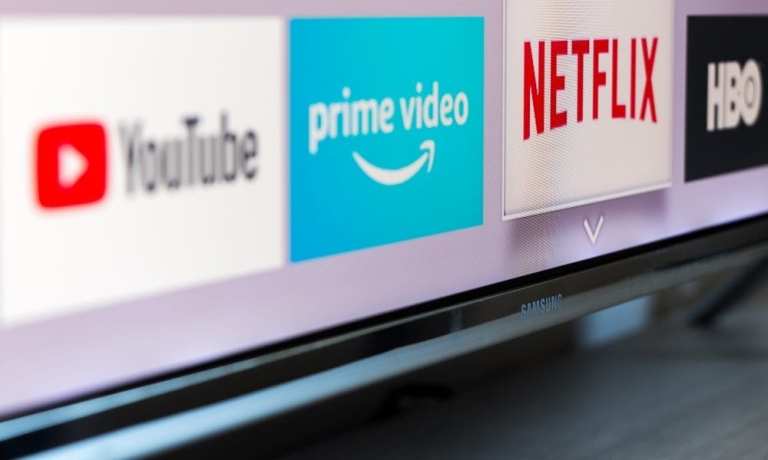
 Streaming video services have taken the home entertainment industry by storm over the last 10 years. The Motion Picture Association of America (MPAA) reported last year that, for the first time, there were more streaming subscribers worldwide than there were cable subscribers — 613.3 million and 556 million respectively. The streaming industry is also expected to be worth $30.6 billion by 2022.
Streaming video services have taken the home entertainment industry by storm over the last 10 years. The Motion Picture Association of America (MPAA) reported last year that, for the first time, there were more streaming subscribers worldwide than there were cable subscribers — 613.3 million and 556 million respectively. The streaming industry is also expected to be worth $30.6 billion by 2022.
The market power player may currently be Netflix, but several competitors have recently sprung up to give it a run for its money. HBO Now, Amazon Prime and Hulu are well-entrenched in the market, but Disney+ and Apple TV+, both of which are scheduled to launch later this year, are sure to take a bite out of the streaming industry.
The Current State of Streaming Technology
The most common type of video streaming is over-the-top (OTT), or video from the internet that directly bypasses the cable, broadcast and satellite services that traditionally control and distribute video content. All of the major subscription streaming services, including Netflix, Hulu and Amazon Prime, fall into this category.
Industry experts typically divide OTT companies into three separate business models: Advertising video on demand (AVOD) services, such as YouTube, offer free content but generate revenue via advertising; transactional video on demand (TVOD) offerings, such as iTunes, charge viewers for each piece of content purchased or rented; subscription video on demand (SVOD) services, such as Netflix, charge viewers a subscription-based fee in exchange for unlimited access to their video catalog. Some platforms combine elements of more than one business model: Hulu charges users a monthly rate, but also shows ads in its lower-priced plans, for example.
Why Netflix Stands to Lose Its Crown
Netflix is currently the subscription market’s undisputed leader, with almost 150 million subscribers, but its seat on the throne grows more precarious by the day. The company announced that it will lose the streaming rights to NBC’s “The Office” in 2021. The show is slated to join NBCUniversal’s upcoming streaming service, and its removal from Netflix cannot be understated. According to The Wall Street Journal, the show accounted for more than 58 billion minutes of stream time in 2018 — approximately 3 percent of all U.S. Netflix traffic.
Netflix is also expected to lose “Friends” — another massive draw for the platform — to WarnerMedia’s upcoming streaming service, HBO Max, set to launch in 2020. Netflix is notoriously private about its viewing statistics, but it paid $100 million for the streaming rights to “Friends” just last year, an indicator of the show’s value.
Both of these losses are peanuts compared the massive blow Disney is expected to strike. The launch of Disney+ is imminent, pushing the production giant to prematurely end its licensing contract with Netflix in February. All Disney content will leave Netflix for Disney+ over the coming months. Disney reportedly lost $150 million when it canceled its Netflix contract, but the company does not seem worried. Disney’s content will likely remain on Hulu, however, as the former owns a 60 percent stake in the latter.
Netflix is investing staggering sums into original productions to make up for these losses, with more than $14 billion expected to be spent this year alone. Netflix recently spent upwards of $250 million each for productions by Shonda Rhimes, Ryan Murphy and “Game of Thrones” creators David Benioff and D.B. Weiss.
New Contenders Vie for the Throne
All eyes are currently on Disney, which will launch Disney+ in November. The service will become the new home for all Disney-owned properties, including the entire Disney animated and live-action canon, Pixar, Star Wars, Marvel, 21st Century Fox and National Geographic. The company plans to release a plethora of original content, including new Marvel and Star Wars series. No R-rated or mature content will be featured on Disney+, the company stated, adding that such content will instead go to Hulu. Disney+ will cost $6.99 a month and will initially be available in Australia, Canada, the Netherlands, New Zealand and the U.S.
Another new player in the streaming market is Apple, which will launch its Apple TV+ video subscription service this fall. It has reportedly committed $5 billion to produce original video content, including $300 million for “The Morning Show” starring Jennifer Aniston and Steve Carrell. This comes out to approximately $15 million per episode, making it the most expensive TV season ever, usurping that crown from the final season of HBO’s “Game of Thrones.”
The subscription price for Apple TV+ is currently unknown, though Bloomberg recently reported that it could be approximately $10 a month after a free trial. This would make it more expensive than its competitors, with Netflix plans starting at $9 a month and Hulu starting at $6.
More than a dozen streaming services will soon be competing for views and subscriptions and spending staggering sums to do so. Which one — if any — will supplant Netflix at the top of the heap is anyone’s guess.